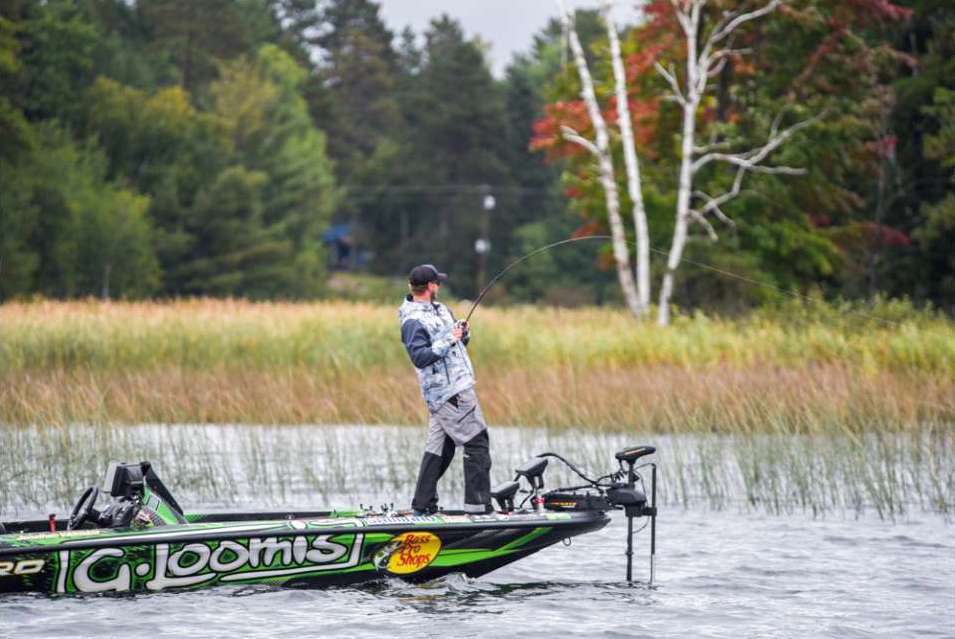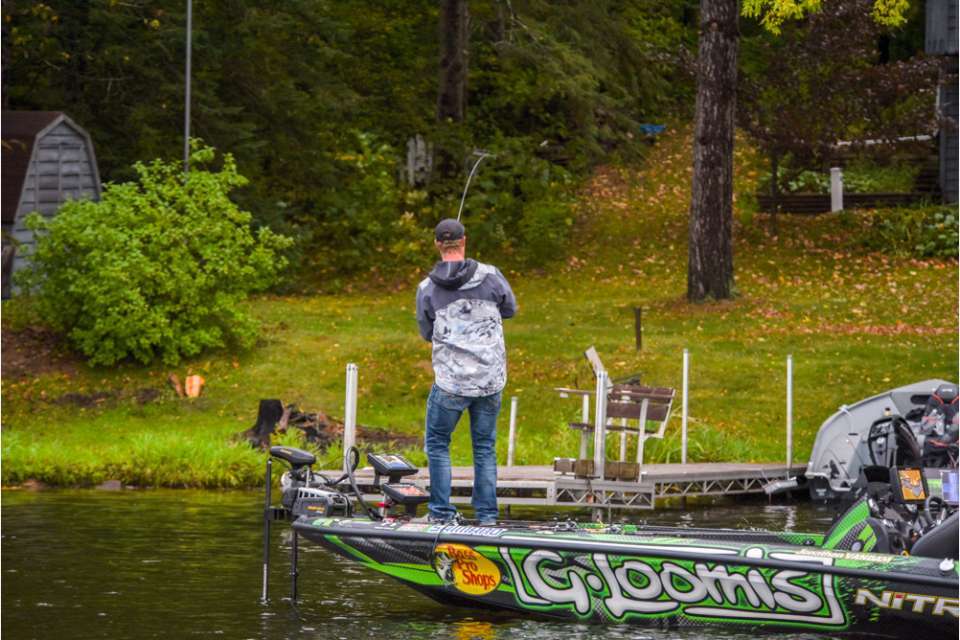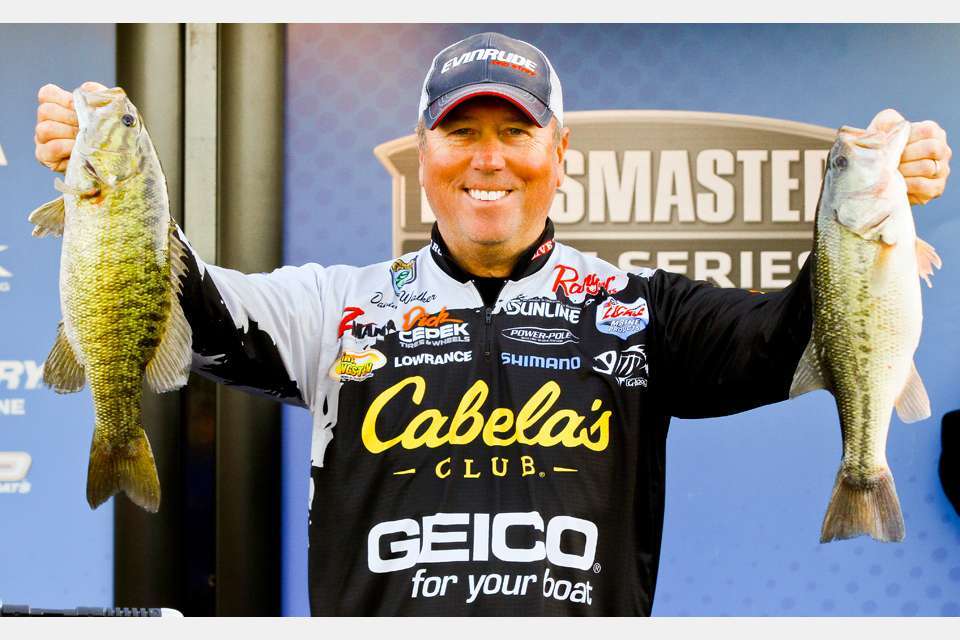
Oklahoma may not be obviously linked to Frost Belt states like Minnesota, Wisconsin and Maine, but it has hosted some of the coldest tournaments in Bassmaster history. Three-time Bassmaster Classic qualifier James Elam of Tulsa knows that while fishing in shorts and flip flops is fun, careers are built on the nasty weather days when no one wants to be outside.
“I’ve seen a little bit of it all,” he said. “I’ve fished in some bad, bad stuff.”
That gets him acclimated for tournaments like last year’s Elite Series event on Tennessee’s Cherokee Lake, where it was “15 degrees and blowing 15, and it definitely wasn’t sunny.”
Knowing that he can’t stay home when inclement weather strikes, he’s developed strategies that enable him to cope with the ugly stuff. The proper clothing is of course one critical element that most anglers consider, but fewer take note of how the elements should influence their choice of rod and reel.
For example, Elam said that earlier in his career he experienced problems with the drags of low grade reels locking up on a hook set in the cold.
“You’ll be jig fishing and when you set the hook it’ll just be dead weight,” he said. “You break off a lot of fish that way.”
That’s why he’s a stickler for using only reels with butter-smooth drags. He’ll also keep his combos in the rod box or in rod wraps until he needs them, the better to protect them from freezing. In super-low temperatures he’ll put Vaseline in his rod guides to keep them from freezing.
Other pros achieve the same effect by spraying the guides with a pump silicone spray, which is less likely to jam up than an aerosol version, and if they’re fishing braid they’ll put it on the line itself to prevent it from retaining water and sealing their rod guides or levelwind shut with ice.
Elam dotes on the Shimano Metanium MGL baitcasting reels in the cold weather, the 150 with its 6.2:1 gear ratio for winding baits like crankbaits and spinnerbaits, and the 8.5:1 gear ratio 150XG model when he’s fishing slower baits.
“I don’t like it any slower than 6.2:1, because when a fish bites I want to be able to catch up to him,” he explained. “I can slow down with that 6.2:1 ratio. Not only is it a really solid reel, but with the lightweight Magnunlite spool it casts incredibly well.”
When it comes time to switch to spinning gear, he favors the Stradic CI4+.
“It’s all I use because it’s so reliable. It casts well and the Shimano folks have virtually eliminated any line twist.
Indeed, anglers who strongly prefer to strictly use either baitcasting tackle or spinning tackle aren’t going to like his suggestion, but Elam said that a major reason he’s able to overcome the elements is because he takes pains to switch back and forth between the two types of tackle.
“Half the rods on my deck will be spinning and half will be baitcasting,” he said. “When I’m using a baitcaster, I’m winding with my right hand. Then after a while I’ll switch to a spinning reel, where I use my left hand. By rotating back and forth I’m able to combat the cold so it doesn’t seem as brutal as that day on Cherokee.”
With that in mind, here are two other Elite pros’ favorite wintertime combos that you might want to integrate into your own arsenal:

JVD’s Cold Water Caster
For Michigan’s Jonathon VanDam, who before the age of 30 has spent more time fishing in frigid waters than most of us will in a lifetime, picking your gear for cold-weather angling comes down to preventing the evils attendant to wintry conditions. You want a rod and reel that will allow you to operate effectively even when trolling motors, steering cables and bilge water are starting to freeze up.
His rod of choice is a G. Loomis GLX 852C jig & worm casting rod. He mixes and matches from various series across the G. Loomis lineup, but a sizeable number of his go-to’s are from the GLX or IMX Pro groups.
“It’s good for just about everything,” he said of the extra-fast 7-foot, 1-inch medium-power rod rated for 1/8- to 3/8-ounce lures, noting that he predominantly uses relatively light line in the colder months.
“It’s short enough for a jerkbait, but it’s also sensitive enough for a small jig or a blade bait. You don’t want a rod that’s too stiff with that light line, but it has to have enough backbone to set the hook.”
The GLX rods use the Fuji K-Frame guides with SIC rings. VanDam loves them and said that “having good guides is especially important when it’s cold because you want something that’s super light, but you don’t want micro-guides, which have a tendency to ice up.”
He pairs it with the new Curado K baitcasting reels, which is one of the “best all-around reels ever made.” He said that it has good line capacity, but also features the MicroModule Gearing that keeps things smooth even when other reels are binding up.
“It’s not only smooth – it’s essentially bulletproof,” he added. “You don’t have to worry about snow or rain or sleet or ice. When fishing in the cold, having durable tackle that can handle the elements is crucial.”
He favors the slowest of the three available gear ratios — 6.2:1 found on the Curado 200K and left-hand retrieve 201K — because it allows him to slow down, and then slow down a little more to convince lethargic bass to eat his offerings.

Walker’s Weapon of Choice
Tennessee pro David Walker might not live as far north as JVD, but the hills and hollows of his home state provide plenty of opportunities to experience all kinds of nasty weather — often all in the same day. Like VanDam, one of his go-to rods at this time of year is an 852S — there’s something about that 7-foot, 1-inch medium-power, extra fast action rod that gets the job done when bites are subtle — but in his case it’s a spinning model from the G. Loomis NRX series.
“I’ve used the NRX rods for years,” he said. “They’re feather-light and ultra-sensitive, which is important at this time of year because the bites are the epitome of subtle. For example, when you’re fishing a ‘float and fly,’ sometimes the bobber doesn’t even go under, you just look for it to stand up straight. I’ve never been a fan of rods that are shorter than 6 feet, 8 inches or 7 feet for these purposes because they all end up being too stiff or too soft.”
While the Stradic K spinning reels are his yearlong workhorses, during the wintertime he’s more likely to rely one of Shimano’s new Sustains, usually a 2500 size, although when more line capacity is necessary he’ll upsize to the C3000.
“People don’t really realize that the only real difference between the two is the spool size. At this time of year, I often go long periods with a spinning rod without actually casting more than 20 to 40 feet away from the boat, so I can get away with the 2500. For example, at the Cherokee Elite Series tournament here last year, the obvious way to fish was vertically, so I wasn’t worried about line capacity.”
When fish are hooked under the boat or only a short distance away, and especially when he’s using no-stretch braid with a low-stretch fluorocarbon leader, he wants his drag to be flawless and that’s why he relies on Shimano reels in general and the Sustain in particular. If the drag has “any stick to it” at all, you’re going to break some fish off.
“This time of year requires patience and focus,” he concluded. “You’re not going to get those sledgehammer bites. A sensitive rod is key and the right reel is equally important.”






